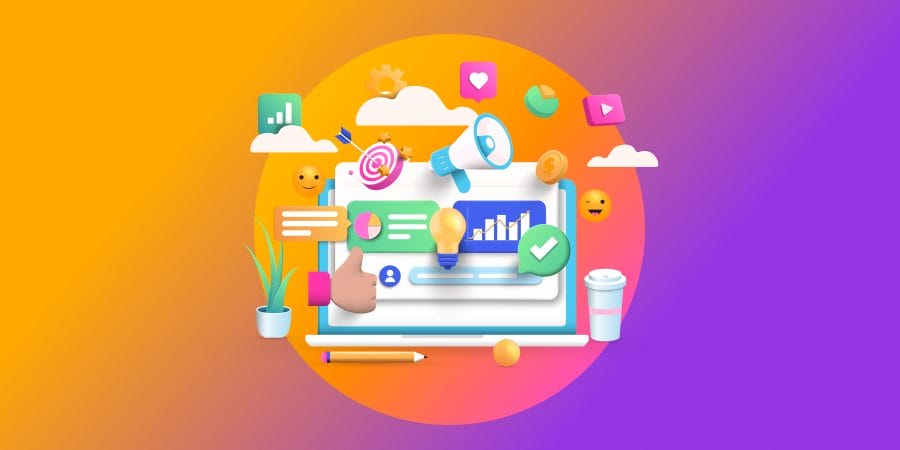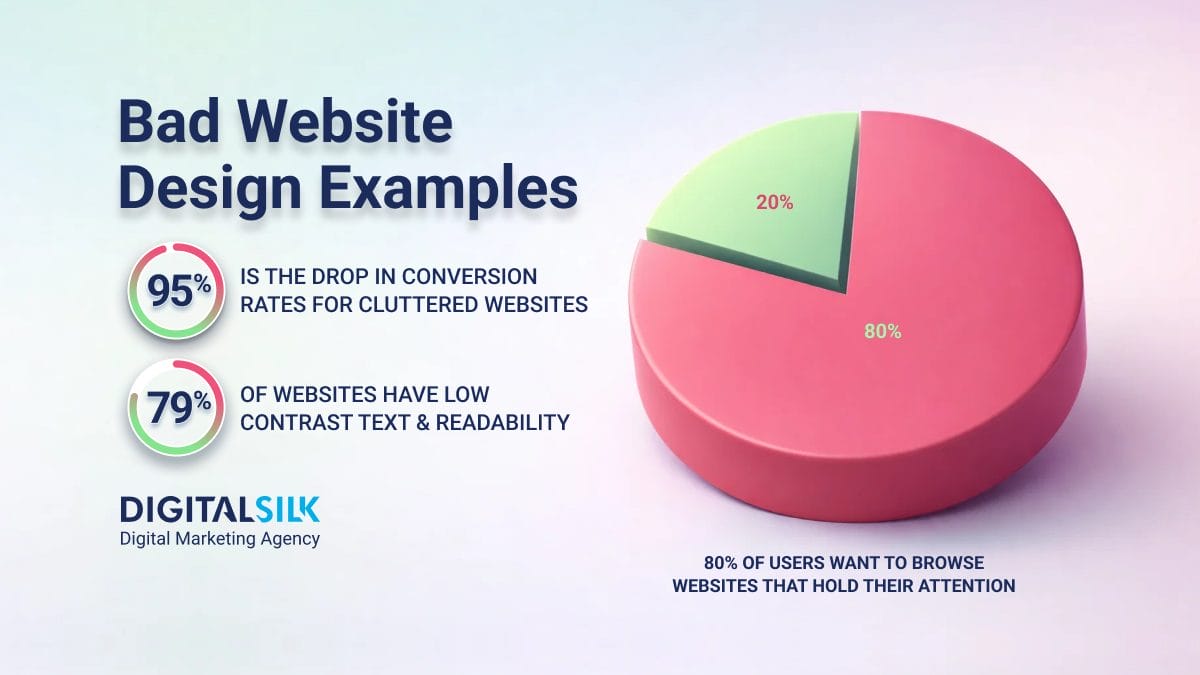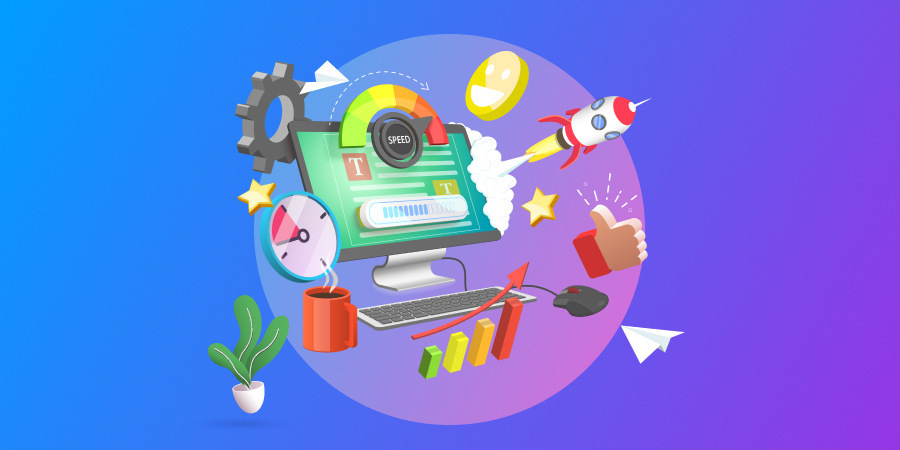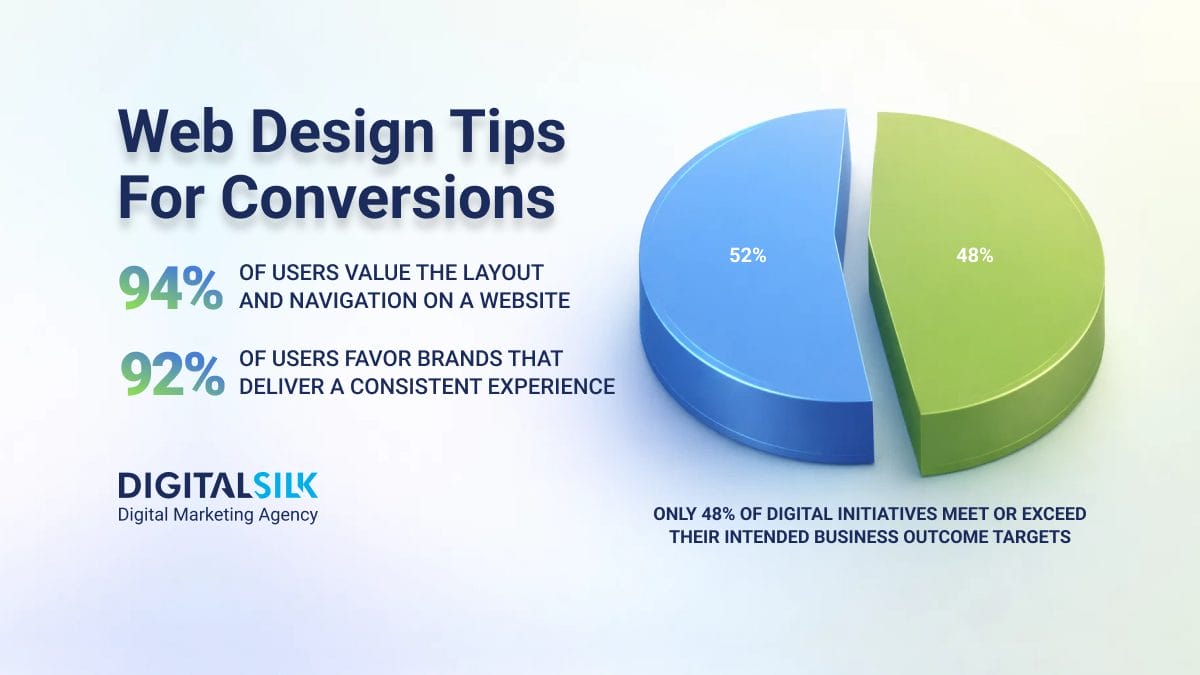As artificial intelligence (AI) is taking the world of business by storm, there seems to be some confusion with using this term when talking about related concepts of machine learning (ML) and deep learning.
To put it simply, artificial intelligence is the wider discipline and the originator from which other concepts arise. But there are also distinctions in their approach and algorithms.
As artificial intelligence grows into a multi-million dollar market, developers, as well as businesses, are finding new perspectives for its use.
All the reasons more to learn about the differentiation between artificial intelligence and machine learning and their individual potentials.
Digital Silk offers custom proposals. Request a quote
The Differences Between AI & ML
The AI market is expected to reach $126 billion dollars by 2025.
Although the terms artificial intelligence and machine learning are often used interchangeably, they are not the same thing.
As Bernard Marr points out in Forbes:
- AI is a wider concept of machine learning and them being able to complete tasks in a manner held intelligent
- ML is merely one application of AI that works around the principle that machines should be given access to data and learn from it, on their own (without being programmed)
AI is sometimes defined as the study of training computers to do things that humans can do better at the time. While ML is an AI application that makes it possible for a system to learn automatically and improve from experience.
GeeksForGeeks portal writes:
“the aim [of AI] is to increase the chance of success and not accuracy, [while the aim of ML] is to increase accuracy, but it does not care about success”
They also make one defining distinction:
“AI is decision making and leads to intelligence or wisdom. ML allows the system to learn new things from data and leads to knowledge.”
Another way of defining the distinction between artificial intelligence and machine learning is by stating that AI utilizes the experience for attaining knowledge that it seeks to apply to new situations. ML uses the experience to find the pattern learned.
A Brief History Of AI & ML
The nucleus of artificial intelligence and machine learning began with the first computers, as their engineers were using arithmetics and logic to reproduce capabilities akin to those of human brains.
Breakthroughs in medical and neurosciences have helped us better comprehend what constitutes a mind, therefore changing the notion of AI which now focused on replicating the processes of making decisions in humans.
It is a common consensus that there are two fundamental groups of AI:
- Applied AI: a more common variant of AI working specifically, with systems made to take control of a vehicle or trade stocks
- Generalized AI: programs and machines that are, theoretically, capable of any task – and the one which basically led to the development of machine learning – the force that drives AI development today
It was in 1959 when Arthur Samuel had a revolutionary notion that computers could be taught how to learn, instead of just teaching them everything there is to know for them to perform tasks successfully.
That was the defining moment in the rise of machine learning. The other happened decades later, with the invention of the internet which began to generate, store and analyze a massive amount of digital information.
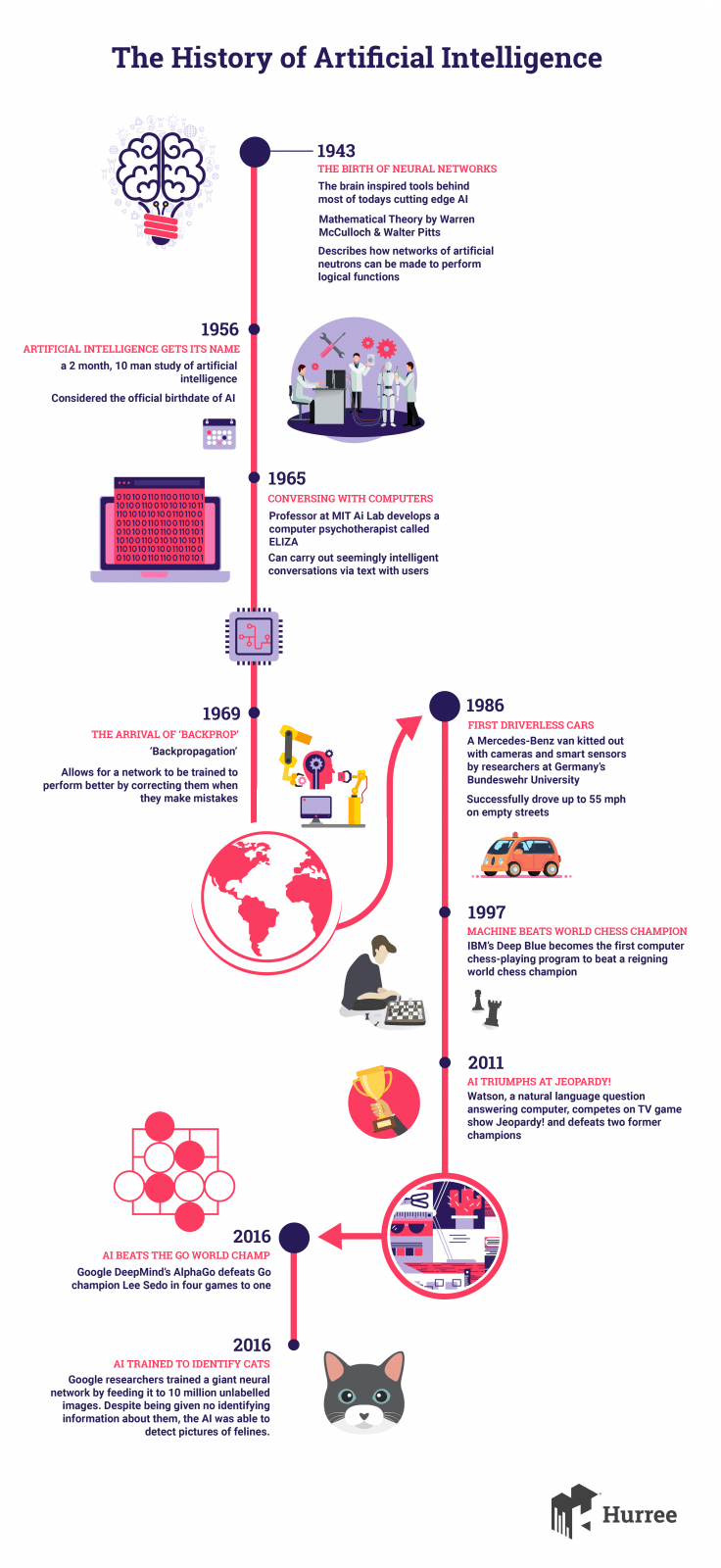
This accumulation of information made it possible to realize Samuel’s dream of coding computers and machines to think like humans as they can harness the powers of the internet info database.
The Technical Nitty-Gritty
To better comprehend the level of technical differences between the two, let us look into these succinct definitions that also cover some other AI disciplines and subsets:
- AI creates intelligent machines and software
- ML is referring to systems that are learning from experience
- Deep Learning (DL) – same as ML, but on large data sets
- Artificial Neural Networks (ANN) – neural networks helping computers learn, based on human neural network
- Natural Language Processing (NLP) – systems that can understand the language
Machine learning is an integral part of most artificial intelligence today. In order for machines and programs to behave intelligently, they first must attain a vast sum of knowledge through learning.
ML’s most important technical aspect that contributes to its architecture are artificial neural networks (ANN) which are the foundation of Amazon’s recommendation engine.
Languages Used In AI & ML
According to Existek, five major coding languages used in AI and ML development are:
- C++
- Java Script
- Lisp
- Python
- Prolog
These are the most agile, capabilities-rich languages that are the backbone of any software or app catering to the business use of AI. Each, of course, has certain drawbacks and advantages when it comes to coding AI – choosing one over the other mainly depends on the functionalities you’d like your AI system to have.
Other resources, such as IT Pro Portal, lists additional programs and tools, like R and Java. Widely used solutions such as Java and Java Script are used to enhance user-friendly experiences on websites and have the upper hand over some others such as simplicity of usage and learning.
These two tools work very well with other applications, whereas R runs seamlessly on multiple operating systems. C++ has a fast code execution, while Python’s general advantage is that it has a large and helpful community of users around the globe.
Neural Networks
It was when artificial neural networks were first developed that a basis for teaching computers to learn was founded. Neural networks help machines keep their advantages over us, such as speed and accuracy.
Neural networks classify the information in a way humans’ brains do: they use it to recognize text and images and categorize them according to content. Neural networks work according to probabilities, odds and data that is fed to them.
That way, neural networks help systems make predictions and decisions with precision and certainty, while it is the so-called feedback loop that enables learning. Systems can either be told by a human what to learn or do, or they can even sense when their decisions are right and wrong.
Thanks to neural networks, machine learning systems can:
- Provide sentiment analysis and determine the tone of the text
- Determine the mood of the musical piece and recommend related music according to the mood
- Make communication as natural between humans and machines as it is between humans themselves (this is the area of natural language processing, NLP, that adds a nuance of speech to machines)
Meet our expert developers. Set Up A Consultation
The Essentials Of Deep Learning
A subset of ML is called Deep Learning (DL), which utilizes machine learning methodologies to help solve issues faced in real life through artificial neural networks that simulate human neural networks and decision-making.
In business, DL can have pattern recognition abilities as it can take a huge amount of data and recognize certain characteristics.
It is Deep Learning that lent a hand to developing tools such as fraud detection systems, image search, speech recognition, translations and more.
Deep Learning (“the cutting-edge of the cutting-edge”, as Marr describes it) has a narrow focus on a subset of ML techniques to solve issues requiring human or artificial thought.
Deep Learning also feeds data through neural networks, as with machine learning, except DL also develops these networks (Deep Neural Networks). These possess the necessary complexity to classify massive datasets such as Google Images.
Some of the uses of DL are in:
- Predicting outcomes: DL can be used in legal proceedings. A team of British and American engineers developed a system that used facts from the trial to predict the outcome with success.
- Navigation: new-generation self-driving cars are using onboard analytics and sensors to recognize obstacles and react to them
- Recoloring and reconstructing images: computers can be taught, through DL, to recognize objects and learn what they look like to humans.
- Automated analysis and reporting
- User-tailored medicine: DL is used in the creation of medicines that are made for individual’s genome
How Artificial Intelligence & Machine Learning Interact
AI can enhance business productivity by up to 40%
The differences between artificial intelligence and machine learning can be complementary, bringing these two disciplines close together so they can cooperate in numerous fields.
AI can be used for a range of tasks that it will complete together with humans (administrative tasks, decision-making, determining the risk levels of certain actions etc. AI works as a support for humans and its main goal is to speed up processes and boost efficiency.
As opposed to that, ML processes and organizes data and information, learns how to complete tasks quickly and more intelligently and predicts problems.
Machine learning does not create – humans, bolstered by AI do. And this is the first level of their interactivity: the creation interaction.
Then, we have Big Data.
Its basic principle is the extraction and systematization of data into one concise report, similar to those found in Google Analytics reports (in terms of visuals).
It is in Big Data that artificial intelligence and machine learning meet and converge again, with the most significant consequences. Big data analyzes and digests more data than ever before, which is produced in staggering amounts thanks to more people and devices uploading things on the internet.
Using Big Data, artificial intelligence and machine learning improved services such as computer speech and image recognition.

Artificial intelligence and machine learning meet, sometimes only briefly, in other different areas.
Processes:
- AI – provides value to humans by letting them concentrate on complicated tasks, brainstorming on creative issues, etc.
- ML – pre-programmed to learn through trial and error, actively making its processes better by learning where to improve them in practice.
Industries:
- AI can be used in businesses and companies that cover the customer service segments in retail, corporate, healthcare etc, as well as factory floors and even advertising.
- ML is helpful in these industries by creating reliable tools. The trust people place in these sturdy solutions helps AI gain credibility so that it gets further incorporated into the business. Machine learning reliability has passed the test with the best results in a segment of self-driving cars.
Other developments:
- AI can boost productivity and the economy by creating more products and services, although some fear that it will cause the loss of jobs as well. However, the increase in production will always create the need for more jobs.
- ML produces the so-called Intelligent Virtual Assistants that enhance the customer service segment.
Tools Used In Both AI & ML
Authority resources such as Hackernoon list some of the tools and open-source software solutions that can be used with both AI and ML-related tasks and requests.
1. Torch
Yandex, Facebook AI Research Group and IBM are only among some major tech companies that are using Torch open-source ML library. It is essentially a scientific computational framework and a language for scripting that has recently been used very extensively across iOS and Android platforms.
2. Google Cloud ML Engine
Google Cloud ML Engine is a platform on which data scientists and AI/ML developers can create and run machine learning models of optimal quality. It can provide training for machine building, deep learning and predictive modeling. This tool is often used to detect clouds on satellite images, respond faster to customer e-mails and so forth.
3. Accord.net
ML framework, Accord.net, is used for making computer audition, signal processing and statistics apps, with over 38 kernel functions. It is combined with image and audio processing libraries that can be applied to a wide array of solutions.
4. TensorFlow
Another open-source library, TensorFlow, rose to prominence when Google Brain Team engineers first used it. Thanks to its flexibility it can be used for numerical computation and for deploying computation to GPUs and CPUs through one API.
5. IBM Watson
One of the largest computer development companies in the world, IBM Watson, is a big name in AI research, thanks to their proprietary solutions and platforms with AI tools fit for developers and businesses alike.
IBM Watson, for instance, comes with open APIs to gain access to sample codes and other kits. This tool is used for coding virtual agents and cognitive search engines, as well as simplistic chatbots.
Examples Of Artificial Intelligence, Machine Learning & Deep Learning Use
Artificial intelligence is no longer a future concept as it’s already transforming how businesses operate today.
In fact, 72% of companies worldwide are using AI in at least one business function, showcasing its rapid adoption and growing impact across industries.
Below are some of the most common applications of AI, machine learning and deep learning driving innovation and efficiency across sectors.
1. Artificial Intelligence
AI has been around for a while and it is here to stay. This branch of computer science has helped the development of the following traits in machines:
- Knowledge reasoning
- Learning
- Planning
- Pattern-recognition
- Problem-solving
- Machine learning etc.
Examples: Siri, Realbox Pulse and Alexa Voice Assistance
Voice-activated assistants are the staple of the Internet of Things segment and are becoming an integral part of households across the globe.
They are used in business too, of course. The biggest challenge in making these is setting them up to understand human speech and, what is even more of an obstacle, understanding the speech commends in numerous different voices and enunciations.
That’s where machine learning, natural language processing and human-to-machine interface come into play.
These AI components not only help recognize speech – businesses and enterprises are using them to help people shop, provide directions and in-house assistance, help in the healthcare industry, etc.
2. Machine Learning
To recap, machine learning has found its purpose in plenty of fields, triggering the development of:
- Image And Speech Recognition
- Statistical Arbitrage
- Classification
- Prediction
- Extraction
- Financial services
Examples: FedEx And Sprint’s Predictive Analytics
ML’s breakthroughs in predictive analysis data can be used for the purposes of customer retention. FedEx and Sprint are using this data to detect customers who may leave them for competitors, and they claim they can do it with 60%-90% accuracy.
Besides leaving for competitors, the delivery companies are able to identify, in advance, customers that are more likely to cancel their delivery – 10 times more likely!
The predictive analysis data pinpoints the factors prompting certain groups to disperse. Companies with this upper hand can then optimize their messaging and campaigns directed at those customers, stopping them to leave.
3. Deep Learning
Examples: Automated Driving
DL is used in the research of the automotive industry that develops self-driving cars. Their inventions help cars drive on their own, detecting and avoiding objects (and pedestrians), with more and more advances being made in reducing the number of accidents.
Medical Research – Deep learning is used in medicine by cancer researchers to detect malign cells in time. UCLA’s team of researchers has built an advanced microscope that uses a data set for deep learning applications to identify cancer cells.
"*" indicates required fields




